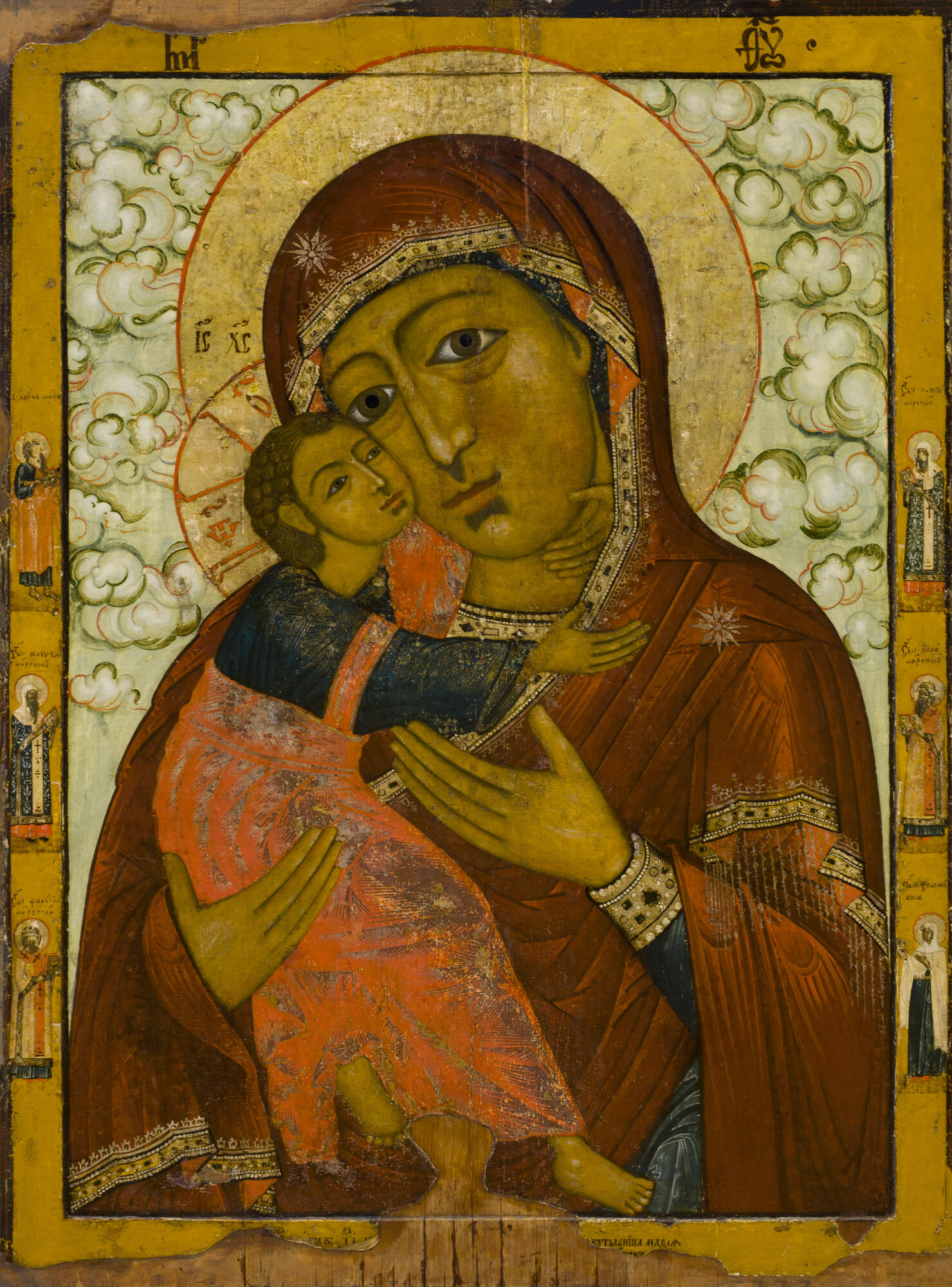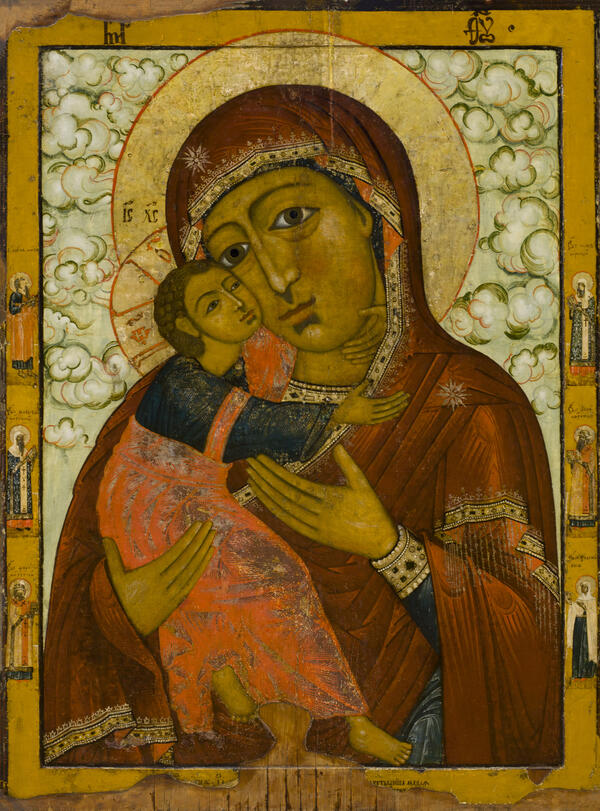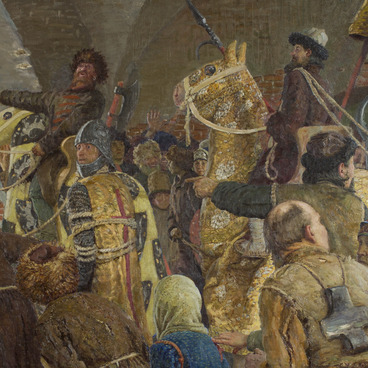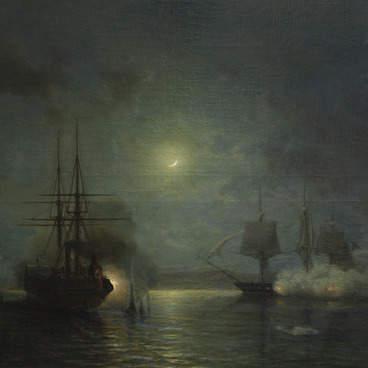This icon is one of the numerous copies of the famous miracle-working image of the Mother of God of Vladimir. Unlike a replica, a copy follows the prototype of the revered image, but does not imitate the original image completely.
The image of the Vladimir icon of the Mother of God came to Russia from Byzantium in the early 12th century. In 1155, the son of Yuri Dolgorukiy, Andrey Bogolyubsky, brought the icon from Kiev to Vladimir and placed it in the Assumption Cathedral — the main church of the Grand Duchy of Vladimir. Since the 15th century, the old miracle-working icon was stored in the Moscow Assumption Cathedral becoming the main holy object of the Russian state. Today, the State Tretyakov Gallery houses the icon in Moscow.
The icon from the Irkutsk museum collection belongs to the Eleousa type, which became known in the Russian tradition as ‘Our Lady of Tenderness’. The infant sits on the Virgin’s right hand and gently presses his cheek against hers. The sole of his left foot is turned to the praying viewer. The entire robe of Christ is covered in “assist” — thin gold-leaf lines. The Virgin turned her left hand to the Child in a prayer gesture.
The Virgin’s figure occupies most of the ‘srednik’ — the centerpiece of the icon, while the nimbus stretches beyond onto the frame. In the margins of the icon, are the full-length images of the Moscow metropolitans Peter, Jonah, Alexius and Philip, as well as Saint Solomoniy and Matthew the Evangelist, who probably was the patron saint of Matthew Lylov. There are some fragments of the inscription that survived, which suggest that the ‘peasant Matthew’ commissioned the icon. In 1686, on the Urik River, near Irkutsk, Matthew Lylov founded a village called Lylovskoye and built a chapel there at his own expense. According to legend, Ioann Fedorov Sukhikh, the Irkutsk protodeacon, who was a skilled painter, created two large icons for this chapel, including the Vladimir icon of the Mother of God.
The first icon painters in Siberia are known to have come from the northern lands — Novgorod, Solvychegodsk, Usolye, Veliky Ustyug. Only a few dozen icons painted in Irkutsk in the first decades of the city’s history have survived to this day. Some of them are in the collection of the Irkutsk Regional Art Museum. These works prove that the masters of the Russian North creatively interpreted and reproduced the heritage of the largest icon-painting centers of Kievan Rus’.
The image of the Vladimir icon of the Mother of God came to Russia from Byzantium in the early 12th century. In 1155, the son of Yuri Dolgorukiy, Andrey Bogolyubsky, brought the icon from Kiev to Vladimir and placed it in the Assumption Cathedral — the main church of the Grand Duchy of Vladimir. Since the 15th century, the old miracle-working icon was stored in the Moscow Assumption Cathedral becoming the main holy object of the Russian state. Today, the State Tretyakov Gallery houses the icon in Moscow.
The icon from the Irkutsk museum collection belongs to the Eleousa type, which became known in the Russian tradition as ‘Our Lady of Tenderness’. The infant sits on the Virgin’s right hand and gently presses his cheek against hers. The sole of his left foot is turned to the praying viewer. The entire robe of Christ is covered in “assist” — thin gold-leaf lines. The Virgin turned her left hand to the Child in a prayer gesture.
The Virgin’s figure occupies most of the ‘srednik’ — the centerpiece of the icon, while the nimbus stretches beyond onto the frame. In the margins of the icon, are the full-length images of the Moscow metropolitans Peter, Jonah, Alexius and Philip, as well as Saint Solomoniy and Matthew the Evangelist, who probably was the patron saint of Matthew Lylov. There are some fragments of the inscription that survived, which suggest that the ‘peasant Matthew’ commissioned the icon. In 1686, on the Urik River, near Irkutsk, Matthew Lylov founded a village called Lylovskoye and built a chapel there at his own expense. According to legend, Ioann Fedorov Sukhikh, the Irkutsk protodeacon, who was a skilled painter, created two large icons for this chapel, including the Vladimir icon of the Mother of God.
The first icon painters in Siberia are known to have come from the northern lands — Novgorod, Solvychegodsk, Usolye, Veliky Ustyug. Only a few dozen icons painted in Irkutsk in the first decades of the city’s history have survived to this day. Some of them are in the collection of the Irkutsk Regional Art Museum. These works prove that the masters of the Russian North creatively interpreted and reproduced the heritage of the largest icon-painting centers of Kievan Rus’.



